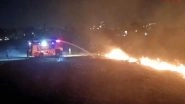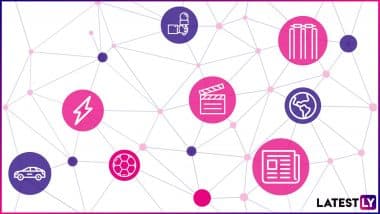Washington D.C. [USA], Jan 8 (ANI): The word 'drone' often invokes images of things like aerial photography or launching missiles and bombs in warzones, but since recreantly, these ingenious and gravity-defying marvels of engineering are finding new applications in areas nobody would have thought of before. Olga Walsh, University of Idaho, is researching the use of drones for fruit trees. Most of the agricultural applications for drones - or, more technically unmanned aerial vehicles (UAV) - have been on grain crops like wheat, corn, and soy."Adoption and use of crop sensors in production agriculture save thousands of dollars every year in many crops," says Walsh."Crop sensors also help to significantly improve the efficiency of agricultural inputs, such as fertilisers and water. Finally, drones can minimise the negative impacts of agricultural activities on environmental quality."Walsh's research team focused on applying UAV technology to fruit trees. Her previous work has been with wheat and other crops. "We know drones can be used in orchards," says Walsh."But there aren't any grower recommendations regarding what data needs to be collected and what kind of data is most useful, depending on the grower objective."The most promising ways the drones could be employed for the orchards and tree nurseries include- taking inventory of tree height and canopy volume; monitoring tree health and quality; managing water, nutrients, pests and disease in-season; estimating fruit/nut production and yield and creating marketing tools.Like with other uses of drones in agriculture, Walsh's work helps to collect detailed information about the crops, faster than humans could by physically "scouting" the fields."The UAVs are capable of acquiring images with high resolutions that are ideal for detecting various crop issues," says Walsh."The UAV systems allow scanning the crops from above. They obtain high-quality images and high-resolution spectral data. This is correlated with plant growth, health, water and nutrient status, and can be used to estimate biomass production."It's not just about the speed of scouting a field. "Sensors can function within regions of the electromagnetic spectrum where human eyes can't," says Walsh."Sensors are much more reliable and objective than visual assessment. They provide quantitative information (numeric data that can be measured and compared) versus qualitative information (descriptive data that can be observed)."Team members also perform outreach. "We conduct grower education on the use of remote sensing and using UAVs for crop monitoring," says Walsh. "We do demonstration flights and produce publications to boost grower adoption of precision agriculture methods.""The overall goal of this work is to strengthen sustainability and competitiveness of Idaho fruit tree producers," says Walsh. "Our findings increased awareness, knowledge, and adoption of crop sensors and UAVs." (ANI)
(The above story is verified and authored by ANI staff, ANI is South Asia's leading multimedia news agency with over 100 bureaus in India, South Asia and across the globe. ANI brings the latest news on Politics and Current Affairs in India & around the World, Sports, Health, Fitness, Entertainment, & News. The views appearing in the above post do not reflect the opinions of LatestLY)













 Quickly
Quickly


